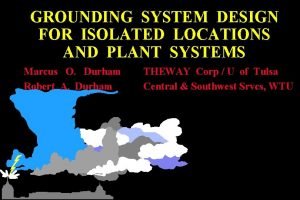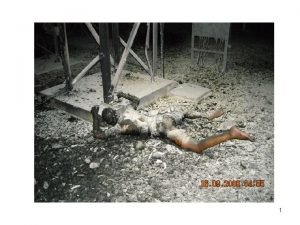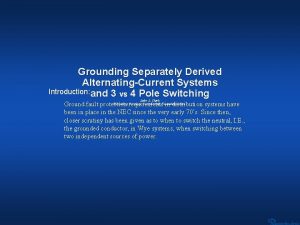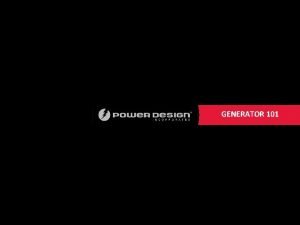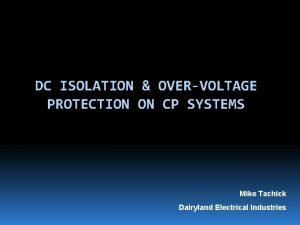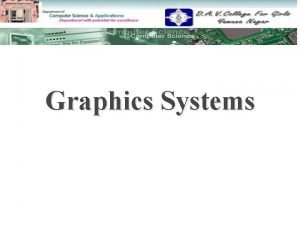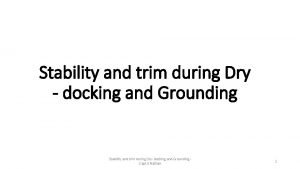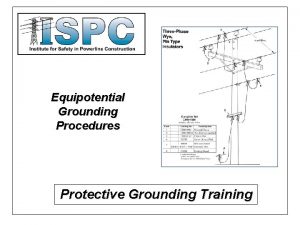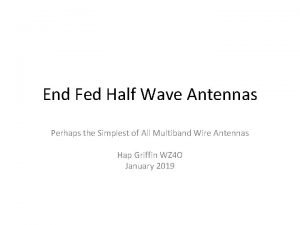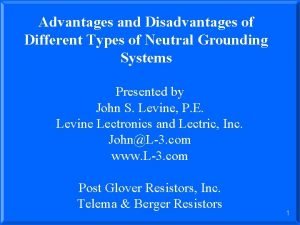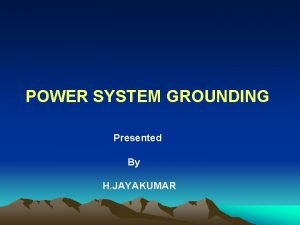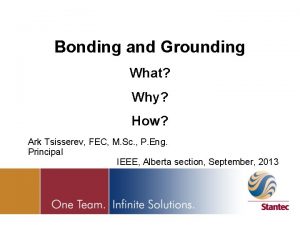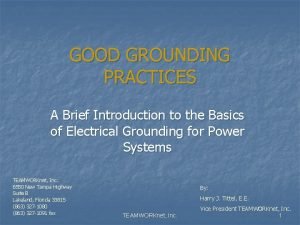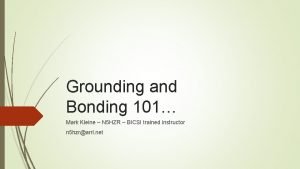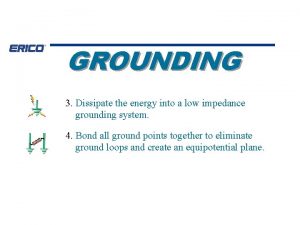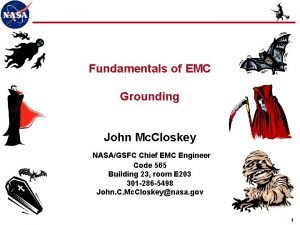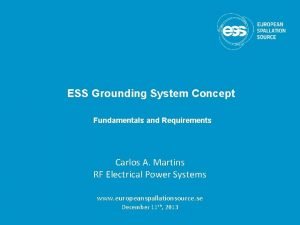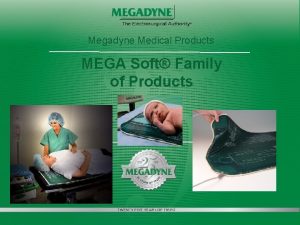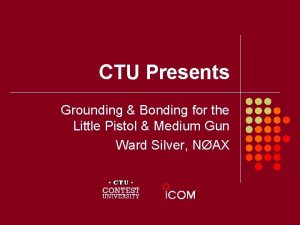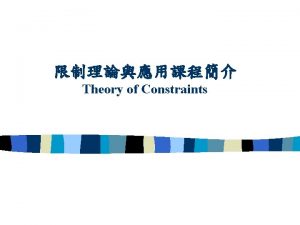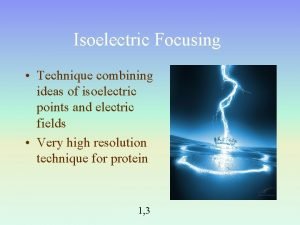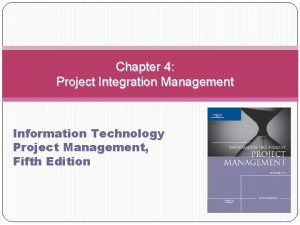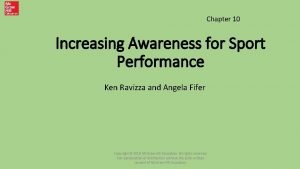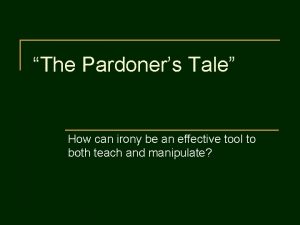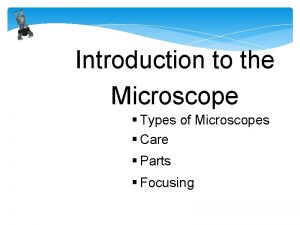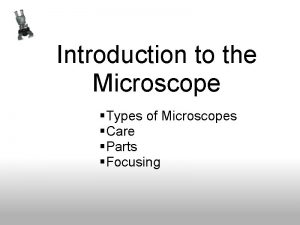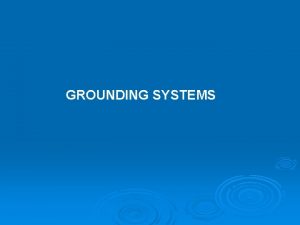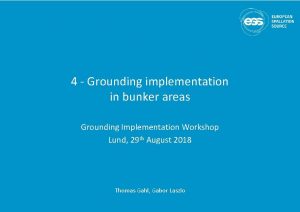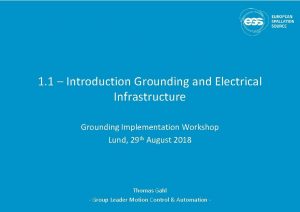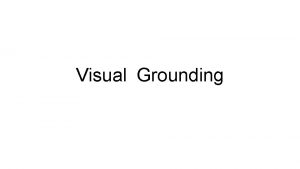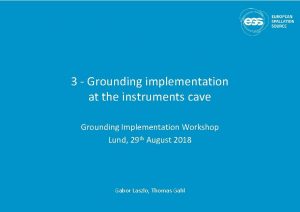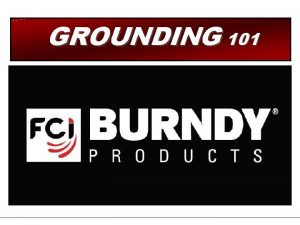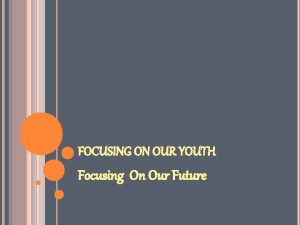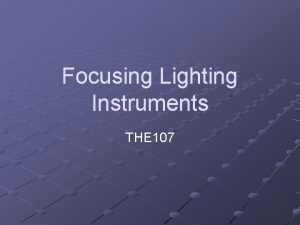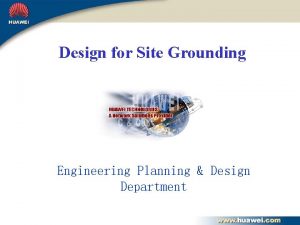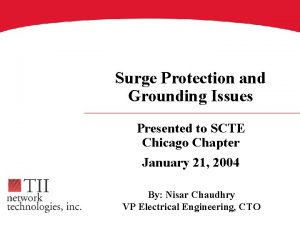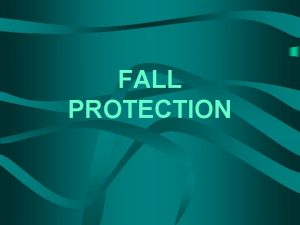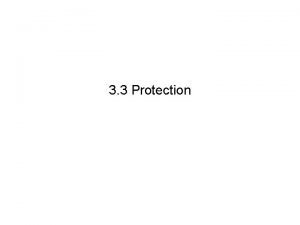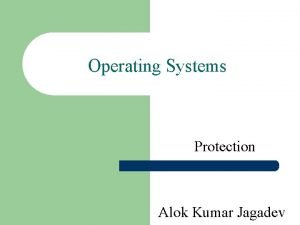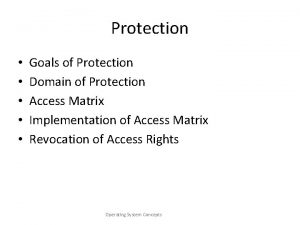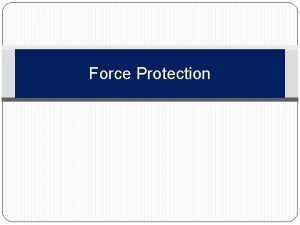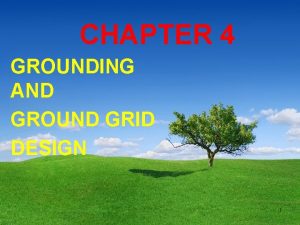Design of PV system focusing on protection grounding

































- Slides: 33

Design of PV system focusing on protection , grounding , wiring &Improvement Students: Ezedeen Al-sayyed, Ahmed. Ghazal& Adham AL-ashqar Supervisor : D. Moien Omar

OUTLINE Overview Design & protection Output Energy Economical study Conclusion & Recommendation

I DEA In the first project we focused on how to design and protect the solar systems in all its details and we found that in most small projects from 1 to 10 k. W the cost of projects is close. In large projects larger than 10 KW there are many options in the design and installation, we decided in the second project to compare the different scenarios for one project The projects are compared with several factors considered , including: the resulting energy, the cost of investment, the recovery period and the reliability.

D ESIGN 60 KW P SOLAR SYSTEM -choosing the Inverter: 3 phase SMA inverter **Scenarios: 1 -one 60 KW inverter 2 -Three 20 kw inverters

ONE 60 KW INVERTER

S YSTEM COMPONENTS

T HREE 20 KW INVERTERS

S YSTEM COMPONENTS

OUTPUT ENERGY Any PV system project should calculate the expected output energy because it represents the profits for the investor who expects the profits of the project and the output energy depends on several factors, including the type of pv panels used, solar radiation , the design , temperature and many other factors.

METHODOLOGY 1. Solar radiation and temperature should be known for 8760 hours per year. 2 - Find the pin value of the inverter. 3 - Find the pout of the inverter

P DC:

1 -60 KW INVERTER

1 -60 KW INVERTER 25000 20000 15000 Series 1 Series 2 10000 5000 0 0 5000 10000 15000 20000 25000

We Find the equation from the graph Eq: Pout of inverter=0. 9817767778*P input And the table in attachments shows the full data. So, take sum energies of 8760 H along a year so we got the output Energy =121. 183773 MWH

3 -20 KW INVERTER

3 -20 KW INVERTER 18000 16000 14000 12000 10000 Series 1 8000 6000 4000 2000 0 0 2000 4000 6000 8000 10000 12000 14000 16000 18000

We Find the equation from the graph: Eq: Pout of inverter=0. 980006*Pinput And the table in attachments shows the full data. So, take sum energies of 8760 H along a year so we got the output Energy = 120. 972140 MWH

E CONOMICALSTUDY In the investment projects, the economic efficiency of the project is taken into account mainly because the project is based on the economy.

1 -60 KW INVERTER We have to put all the costs and profits: **Costs: Initial cost , maintenance cost. **Profits: resulting from selling the output energy annually , salvage value.

C OSTS *Initial costs = 178719 NIS *Maintenance cost = 1. 5% * Initial Cost = 2681 NIS

PROFITS profits include the energy yield from the system and the salvage value at the end of the life of the project. The energy yield from the system=121. 183773 MWH/year. to calculate the profits from the energy we take into consideration the Selling price of 1 kwh which is 0. 54 NIS/kwh. So, profits=121183. 773 kwh*0. 54 NIS/kwh=65439. 23742 NIS Salvage value= 10% *investment cost =10% *178719 NIS= 17871. 9 NIS

0 ar 1 ye ar 2 ye ar 3 ye ar 4 ye ar 5 ye ar 6 ye ar 7 ye ar 8 ye ar ye 9 ar 1 ye 0 ar 1 ye 1 ar 1 ye 2 ar 1 ye 3 ar 1 ye 4 ar 1 ye 5 ar 1 ye 6 ar 1 ye 7 ar 1 ye 8 ar 1 ye 9 ar 20 ye CASHFLOW 100000 50000 0 -50000 -100000 -150000 -200000 Initail cost maintaice cost profits salvage value

PAYBACK PERIOD Payback period =p 0/ capital cost =619926. 8363 NIS/179319 = 3. 45 year. =3 year and 6 months.

NET ANNULA CASHFLOW A(+)=Salvage value(A/F, 8%, 20)+ Annual profits A(-)=Initial cost (A/P, 8%, 20)+ maintenance cost **Total annual profit= A(+) – A(-) =65831. 94561 NIS -20962. 3861 NIS = 44869. 55951 NIS.

3 -20 KW INVERTER We have to put all the costs and profits: **Costs: Initial cost , maintenance cost. **Profits: resulting from selling the output energy annually , salvage value.

C OSTS *Initial costs = 184713. 2 NIS *Maintenance cost = 1. 5% * Initial Cost = 2770. 698 NIS

PROFITS profits include the energy yield from the system and the salvage value at the end of the life of the project. The energy yield from the system=120. 972140 MWH/year to calculate the profits from the energy we take into consideration the Selling price of 1 kwh which is 0. 54 NIS/kwh. So, profits=120972. 14 kwh*0. 54 NIS/kwh=65324. 9556 NIS Salvage value= 10% *investment cost =10% * 184713. 2 NIS = 17871. 9 NIS

0 ar 1 ye ar 2 ye ar 3 ye ar 4 ye ar 5 ye ar 6 ye ar 7 ye ar 8 ye ar ye 9 ar 1 ye 0 ar 1 ye 1 ar 1 ye 2 ar 1 ye 3 ar 1 ye 4 ar 1 ye 5 ar 1 ye 6 ar 1 ye 7 ar 1 ye 8 ar 1 ye 9 ar 20 ye CASHFLOW 100000 50000 0 -50000 -100000 -150000 -200000 Initail cost maintaice cost profits salvage value

PAYBACK PERIOD Payback period =p 0/ capital cost =618126. 0458 /184713. 2 = 3. 346 year= 3 years and 3 months

NET ANNULA CASHFLOW A(+)=Salvage value(A/F, 8%, 20)+ Annual profits A(-)=Initial cost (A/P, 8%, 20)+ maintenance cost Total annual profit= A(+) - A(-) = 62958. 77951 NIS - 21592. 97308 = 41365. 80643 NIS.

CONCLUSION AND RECOMMENDATION We can conclude the two scenarios by this table:

CONCLUSION AND RECOMMENDATION It can be seen from analysis that both configurations of pv systems approximately have same MWH (energy produced). On the other hand, Reliability of the second system (3 -20 KW inverters) is much better. Hence, we recommend to use system design with multi inverters instead of central inverter.

Thank you
 Grounding system design
Grounding system design Ground grid design
Ground grid design Separately derived system
Separately derived system Non separately derived system grounding diagram
Non separately derived system grounding diagram Tower grounding system training
Tower grounding system training Decoupling from utility grounding system
Decoupling from utility grounding system Display devices in computer graphics
Display devices in computer graphics Drydocking and grounding
Drydocking and grounding Job card grounding
Job card grounding Grounding transformers
Grounding transformers Equipotential grounding
Equipotential grounding Efhw grounding
Efhw grounding Objective of earthing
Objective of earthing Job card grounding
Job card grounding Ungrounded system advantages
Ungrounded system advantages Seeking safety grounding
Seeking safety grounding Why grounding is required
Why grounding is required In-situ grounding electrode
In-situ grounding electrode Teamworknet
Teamworknet Grounding and bonding level 1 lesson 5
Grounding and bonding level 1 lesson 5 Grounding
Grounding Nasa-std-4003
Nasa-std-4003 Grounding
Grounding Megadyne mega soft
Megadyne mega soft Arrl grounding and bonding pdf
Arrl grounding and bonding pdf 5 focusing steps
5 focusing steps Focusing on broad organizational needs
Focusing on broad organizational needs Isoelectric focusing
Isoelectric focusing Ultrasound
Ultrasound Focusing on broad organizational needs
Focusing on broad organizational needs Awareness requires totally focusing attention on the task
Awareness requires totally focusing attention on the task Types of irony in the pardoner's tale
Types of irony in the pardoner's tale When focusing a specimen you should always start with the
When focusing a specimen you should always start with the Types of microscope
Types of microscope
